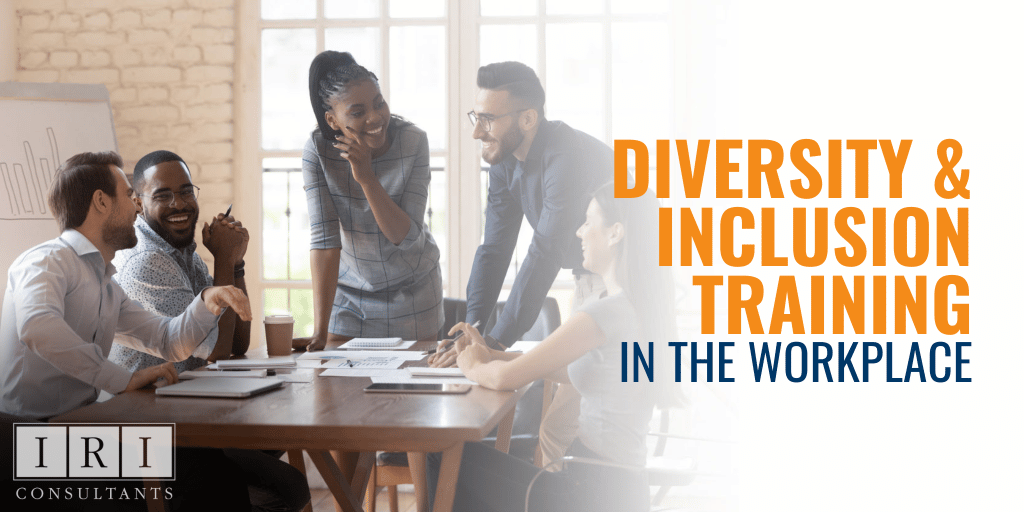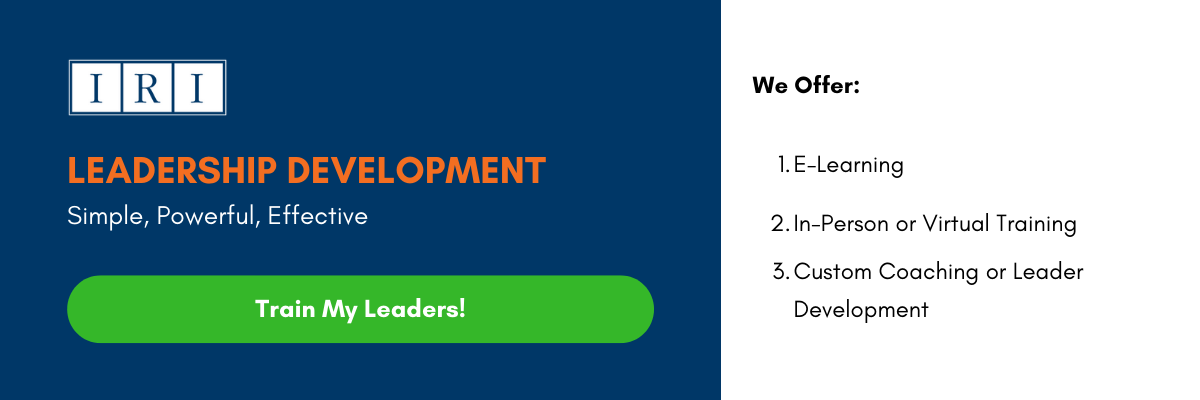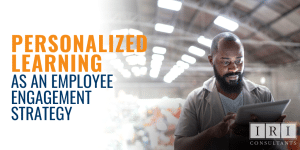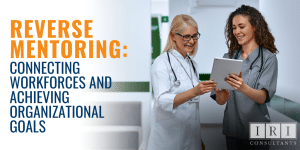Diversity and Inclusion Training in the Workplace
Diversity and Inclusion is a common topic today, but the perspective often considers it an issue about government compliance. The reality is that Diversity and Inclusion is about being globally competitive, creative, and innovative, and organizational culture of belongingness, fair recruiting and hiring, onboarding, and employee workplace satisfaction. Yes, it's about all that and more. Diverse teams take what is different, turn the differences into unique strengths and exhibit higher levels of creativity. Developing an inclusive workplace means much more than hiring diverse workforces, which is why a Diversity & Inclusion training program is so important.
What is Diversity and Inclusion (D&I)?
Diversity and Inclusion are used as co-terms because your organization can be diverse but not inclusive. Diversity is a dimension for differentiating people based on a demographic, like race, gender, ethnicity, or some other characteristic. But the term embraces much more in its fullness. It means respect and valuing differences and not just counting heads which is where Inclusion becomes important.
Inclusion is a state of being valued and respected, but it too embraces more. Inclusion in the organization means the employer ensures each person works in conditions that enable achieving full potential. There is an inclusive culture and operational environment that recognizes, appreciates, and utilizes every employee's skills, talents, and perspectives. All employees can use their skills to meet personal and work objectives and feel connected to the organization. Inclusion is a set of behaviors that encourages employees to feel valued for their differences.
A third concept takes Diversity and Inclusion to the next level – belonging. Belonging is different from Inclusion. Belonging refers to employees who feel like they are in the right place, working with the right people, and doing the right work. They don't feel excluded because of their gender, skin color, ethnicity, disability, or sexual orientation. They can bring their authentic selves to work and have an equal voice, knowing they are appreciated for their talents and what they have to offer the organization in terms of unique perspectives and life experiences.

Diversity and Inclusion Training
A Diversity & Inclusion training program is intended to help leaders and employees understand Inclusion and the behaviors that promote collaboration among employees. It also helps organizational leaders recognize the lack of diversity in the workplace and the many forms of conscious and unconscious bias. Without recognition, nothing will change.
Benefits of Diversity and Inclusion Training
Alain Dehaze, CEO of the Adecco Group, said it perfectly at a World Economic Forum, "While recruiting the best talent remains essential, diversity trumps talent. Different studies show cognitively diverse teams regularly outperform counterparts comprising "just" highly gifted people. Diverse groups do best at complex problems and innovation when the facts aren't clear: each individual's perspective allows him or her to tackle challenges differently, and, when stuck, rely on others' differing points of views to progress."
Effective diversity indeed contributes to people and business success. In the McKinsey study Delivering through Diversity, businesses that have a more racially and ethnically diverse workforce have a whopping 33 percent performance advantage over companies that try to hire people who fit a monoculture. This is just one of the benefits of Diversity and Inclusion. A full business case for D&I addresses how diverse and inclusive businesses are more innovative, resilient, adaptable, gain access to a larger labor pool, and access new markets through products designed to reach diverse consumers. These benefits are achieved by carefully developing an effective Diversity and Inclusion training and strategic plan and D&I operating plan for implementation.
As the workforce is increasingly composed of more millennials and Gen Z, organizations can't afford "business as usual" in the diversity space. In the Deloitte Global 2021 Millennial Survey, 15 percent of millennials who left their jobs recently indicated it was due to a lack of diversity and Inclusion in the workplace. Millennials have indicated they will not accept the status quo and believe private individuals and businesses can improve society. Shani Dhanda, the founder of Diversability, the Asian Woman Festival, and the Asian Disability Network, said, "When it comes to diversity and Inclusion, we need to give the power to those who have the skills, the lived experience, and the passion for really changing the narrative. It's about being an ally to others and thinking about who's not in the room, whose voice needs to be represented."
Why Do You Need Diversity & Inclusion Training?
Millennials are agents of change, and Gen Z is joining the change effort with even stronger convictions. Younger millennials and Gen Z members entering the workforce believe that Diversity and Inclusion is a requirement and not a preference. It's one of the elements driving the Proactive Era. They want employers to commit to change by hiring more diverse team members, helping employees of color advance, and holding uncomfortable conversations about systemic racism. A Glassdoor survey found that 76 of employees and job seekers said a diverse workforce was important when evaluating opportunities, and 37 percent said they wouldn't apply to a company that had negative satisfaction ratings from people of color.
So another one of the benefits of a Diversity & Inclusion training is an enhanced ability to attract top talent. Companies are getting more engaged around diversity, equity and Inclusion (DEI), organizational culture, and employee engagement.
Unfortunately, many companies still don't have a strategy or action plan for Diversity & Inclusion. Their leaders need Diversity & Inclusion training to understand how to proceed and drive real change. Without a diversity training program, organizational leaders are often "checking the boxes" for government compliance but aren't doing what is necessary to advance Inclusion.
Workplace Diversity & Inclusion Best Practices
When asking "What is Diversity & Inclusion?" it's important to understand that Diversity and Inclusion also embrace equity and belonging. It's so much more than hiring women and people of color or different ethnicities. It begins with developing a culture of Diversity, Equity, Inclusion, and Belonging, which pervades every organizational process and system. When approached with the right perspective, Diversity & Inclusion are not just words. They are behaviors that support the culture, making you an employer of choice. Diversity & Inclusion training is at the heart of becoming a truly diverse and inclusive organization where all employees – remote employees and onsite employees – have a sense of belonging.
Following are some Diversity & Inclusion best practices.
- Develop a "speak up" company culture where people are not afraid to share their unique experiences, be transparent about expressions of bias (including microaggressions), and share creative ideas because they know they will not be bypassed or criticized or ignored. You need a psychologically safe workplace where every diverse employee's voice is heard.
- Diversity and Inclusion is not just a Human Resources responsibility. Managers and supervisors think they can leave the actual work of developing a diverse and inclusive organization to the specialists. That's common mistake organizations make. In truth, D&I must be operationalized, meaning it is embedded in all business policies, procedures, practices, and systems. It is day-to-day decision-making that drives D&I as a shared organizational goal.
- Include in your Diversity & Inclusion training program for leadership development topics like emotional intelligence and leading with empathy. Every leader should buy into Diversity and Inclusion as important to organizational and employee success. They should be empathetic to what it feels like to be excluded, and everyone has been excluded at some point in life.
- Hold all your leaders accountable. When you develop a Diversity and Inclusion strategic plan, one thing to keep in mind is that your organization can't simply talk the talk. Your leaders must walk the walk, including being held accountable for advancing diversity, Inclusion, and belonging. SMARTER goals can support accountability because they include evaluation or measurement.
- Utilize data analytics to get a deep understanding of your human capital practices and workforce. The data collected and data analytics generated will tell you things like specific departments where inequities are occurring or the people hired are always from a specific group, or only white males get career development opportunities. There are always obvious signs pointing to bias, but you have to search for the more subtle ones.
- Ensure workforce Diversity & Inclusion training programs are ongoing and not one-and-done training events. A good practice is to implement an online leadership and employee training program because you can keep it updated. It's available 24/7 and delivers critical data that enables your leaders to track employee participation and results.
- Include Diversity & Inclusion in the onboarding process so that new hires begin work with a deep understanding of the company policy and commitment to diversity, equity, and inclusion, as well as belonging. This sets the stage for expectations for employee behaviors.
- Encourage people to have honest conversations about power, equity, and privilege. This best practice comes with some warnings. It's difficult to get people to be honest about things like diversity and Inclusion because they fear saying the wrong thing or worry about being attacked. It's the reason conversations like this are often avoided.
Honest Conversations and Fostering Trust
Honest conversations require trust and transparency, so it takes leaders with emotional intelligence who can guide these conversations. These are not conversations about fixing anyone who may harbor biases. They are about helping people recognize their biases, deepen their personal understanding of what they are and how to overcome them, and increase their understanding of the significant impact bias has on diverse people. Your leaders, especially white males who hold so many positions of power, must become allies in advancing D&I. Leaders and team members must develop trust, so people are willing to be vulnerable.
In the book "The Power of Inclusion," authors Michael Hyter and Judith Turnock make a business case for an inclusive human resources development model. The model shows that the development attention people receive is the source of talent acquisition in many cases. The authors built the model on the premise that exclusion is built into leadership, management, and human resources practices perpetuating unequal opportunity. Creating a culture of inclusion in which all employees get development opportunities can unlock human potential, which in turn maximizes productivity.
The authors reinforce that one of the most important best practices is implementing a Diversity and Inclusion training program for leaders. Unless your leaders are committed to D&I, equity, and belonging, not much will change. So you can see that claiming your entire organization is diverse because you have achieved hiring goals for diverse employees doesn't address Inclusion and belonging.

Diversity and Inclusion Training Essential for Leadership Skills
Recognizing your leaders is key to developing a diverse and inclusive workplace where people from different backgrounds feel belonging. A Diversity & Inclusion best practice is developing the right leadership skills. The type of skills includes, but are not limited to, the following.
- Ability to develop trust among team members, so employees are willing to admit there is an issue
- Ability to develop a workforce that holds one another accountable for calling out acts of bias, microaggressions, lack of Inclusion, structural inequalities, and biased Human Resources policies and procedures
- Ability to develop and support a company culture in which employees are willing to engage in a passionate exchange of ideas
- Has a strong commitment to decision-making, work effort, and Inclusion to promote individual and team success through authentic leadership
- Focus on achieving D&I goals as a collective effort and not as the responsibility of a D&I leader or Human Resources
- Ability to set organizational, functional, and/or department goals to drive progress in increasing representation, employee engagement, and equal participation in work and career opportunities
- Ability to recognize and understand the expectations of younger generations concerning diversity and Inclusion
Time to Make Real Progress
What is diversity & inclusion training, and how essential is it in the workplace? Most organizations understand diversity, but many still struggle with the concepts of true Inclusion and belonging. One of the frustrations diversity leaders feel is that progress has been too slow in developing diverse and inclusive organizations, which explains some of the frustrations that boiled over into employee protests over social justice and systemic racism within organizations. People who believe they are locked out of opportunities because of their differences experience enormous frustrations.
We can help your organization become a leader in Diversity and Inclusion through customized leader and employee training program that includes eLearning courses, videos, podcasts, and a host of other options to engage employees on an ongoing basis. We're not just talking about being "politically correct" - but we believe in showing your leaders how their team can be more successful in a global marketplace. Including some of the challenges that your company may face making diversity and inclusion operational realities.
Train My Leaders on Diversity & Inclusion
Here's what your leaders will come away with when they complete "Diversity & Inclusion" training from A Better Leader:
- How diversity and inclusion work together to build stronger, more successful companies
- An understanding of the challenges companies face when making diversity and inclusion an operational reality
- Things your leaders can do to improve diversity and inclusion in your workplace






